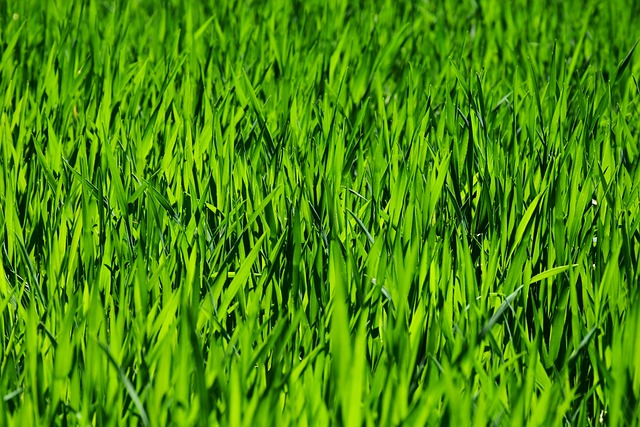For optimal lawn care and landscaping, understand your grass species' water needs, tailor watering schedules based on climate, soil, and grass type, and integrate irrigation with landscape design. Choose suitable irrigation systems (spray, drip, or sprinkler) for targeted or even moisture distribution, install strategically, and test for balanced water coverage to enhance both lawn health and outdoor aesthetics.
Irrigation system installation is a crucial step in achieving lush, vibrant lawns. Understanding your lawn’s unique water needs and strategic planning form the foundation of effective lawn care and landscaping. This comprehensive guide explores various irrigation systems—spray, drip, and sprinkler options—to ensure optimal hydration. We provide a detailed, step-by-step installation process, empowering you to transform your outdoor space into a thriving oasis.
- Understanding Your Lawn's Water Needs and Planning for Irrigation
- Types of Irrigation Systems: Spray, Drip, and Sprinkler Options for Optimal Lawn Care
- Installation Process: Step-by-Step Guide to Efficient Landscaping Irrigation System Setup
Understanding Your Lawn's Water Needs and Planning for Irrigation

Understanding your lawn’s water needs is a crucial step in planning for an efficient irrigation system. Different grasses have distinct requirements, so identifying the specific type on your property is key. Consider factors like climate, soil conditions, and grass species – warm-season grasses, for example, require more frequent but shorter watering sessions during hotter months. Establishing a schedule tailored to these needs ensures optimal growth while conserving water.
When planning irrigation, envision your lawn care and landscaping goals. Where do you want to create specific areas for relaxation or play? How might plants and flowers enhance the overall aesthetic? A thoughtful layout considers not just the grass but all greenery, ensuring each element receives adequate moisture. This holistic approach turns your irrigation system into a tool for enhancing both functionality and beauty in your outdoor space.
Types of Irrigation Systems: Spray, Drip, and Sprinkler Options for Optimal Lawn Care

When it comes to lawn care and landscaping, choosing the right irrigation system is key for a lush, green oasis. There are three primary types to consider: spray, drip, and sprinkler systems, each offering unique advantages tailored to specific needs. Spray irrigation, also known as misting or fine-droplet watering, uses nozzles to spray water in a fine mist, covering large areas efficiently while reducing evaporation. This method is ideal for extensive landscapes where even moisture distribution is crucial.
Drip irrigation, on the other hand, delivers water directly to the plant roots through a network of pipes and emitters placed near the soil surface. It’s an incredibly efficient system that minimizes water waste as it provides precise, targeted watering right where plants need it most. Perfect for flower beds, vegetable gardens, and drought-tolerant landscaping. Sprinkler systems, with their overhead nozzles, spray water directly onto the lawn or plants below, making them excellent for large open spaces that require thorough and rapid soaking. They are versatile and can be set on timers to automate your lawn care routine.
Installation Process: Step-by-Step Guide to Efficient Landscaping Irrigation System Setup

Setting up an efficient landscaping irrigation system involves careful planning and a systematic installation process. Here’s a step-by-step guide for lawn care enthusiasts looking to enhance their outdoor spaces:
1. Assess Your Landscaping Needs: Begin by evaluating your lawn’s size, shape, and specific water requirements. Identify areas that need more attention, such as slopes or dense vegetation, which may require targeted irrigation solutions. This step is crucial in determining the system’s design and component selection.
2. Design the Irrigation System Layout: Create a detailed plan of your landscape, marking the location of each sprinkler head or drip emitter based on plant types and water needs. Consider factors like sun exposure, shade, and wind patterns to ensure optimal water distribution. A well-designed layout minimizes water waste and promotes even lawn care.
3. Choose the Right Irrigation Components: Select high-quality components suitable for your climate and landscape. This includes pipes, valves, emitters, or sprinkler heads. Consider energy-efficient options like drip irrigation for targeted watering, which is ideal for trees, shrubs, and flowers. For larger areas, pop-up sprinklers offer a convenient solution.
4. Install the Pipe System: Dig trenches or use existing pathways to lay the irrigation pipes according to your design. Ensure proper spacing and depth for optimal water flow and distribution. Connect the pipes using fittings and couplings, creating a secure network that can withstand pressure variations.
5. Attach Valves and Control Devices: Install control valves at strategic locations to manage water flow. Add timers or smart controllers for automated irrigation scheduling, ensuring your lawn receives water efficiently without wastage. These devices allow for precise control over watering times and durations.
6. Place Sprinkler Heads or Emitters: Position the chosen sprinkler heads or emitters according to your design, ensuring they reach the intended plants. Adjust their angles and heights for optimal spray distribution. Test each component to ensure proper functioning before proceeding to the next step.
7. Test and Fine-Tune the System: Once installed, run a test cycle to identify any leaks or malfunctioning components. Check water pressure and flow rates at different points in your landscape. Adjust as necessary to ensure every area receives adequate water coverage without over-saturating the soil.
Irrigation system installation is a strategic investment in your lawn care and landscaping. By understanding your lawn’s water needs, selecting the right type of irrigation system, and following a meticulous setup process, you can ensure efficient watering, promote lush growth, and achieve beautiful results. Incorporating these steps into your lawn care routine will create a vibrant, healthy, and drought-resistant outdoor space that enhances your property’s value.
